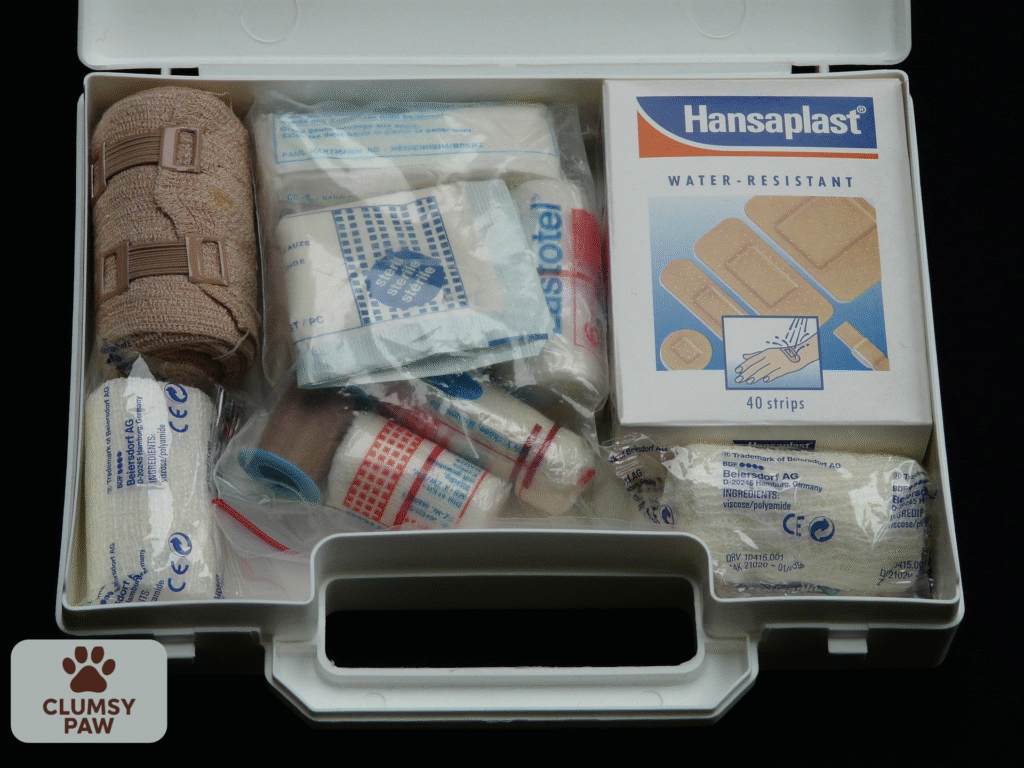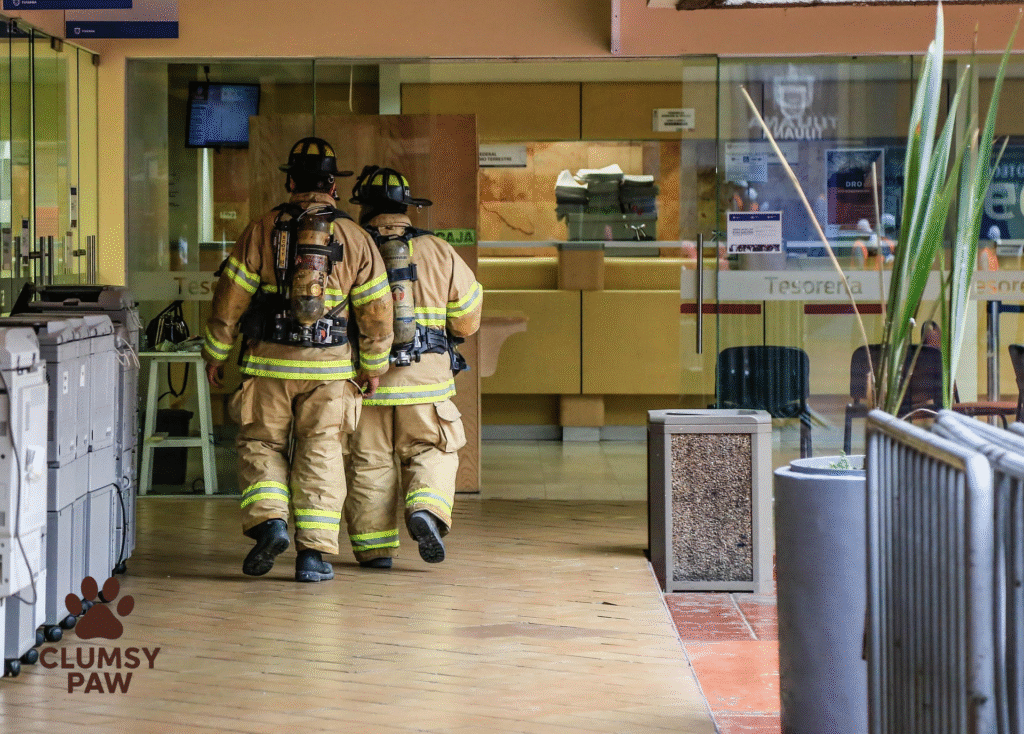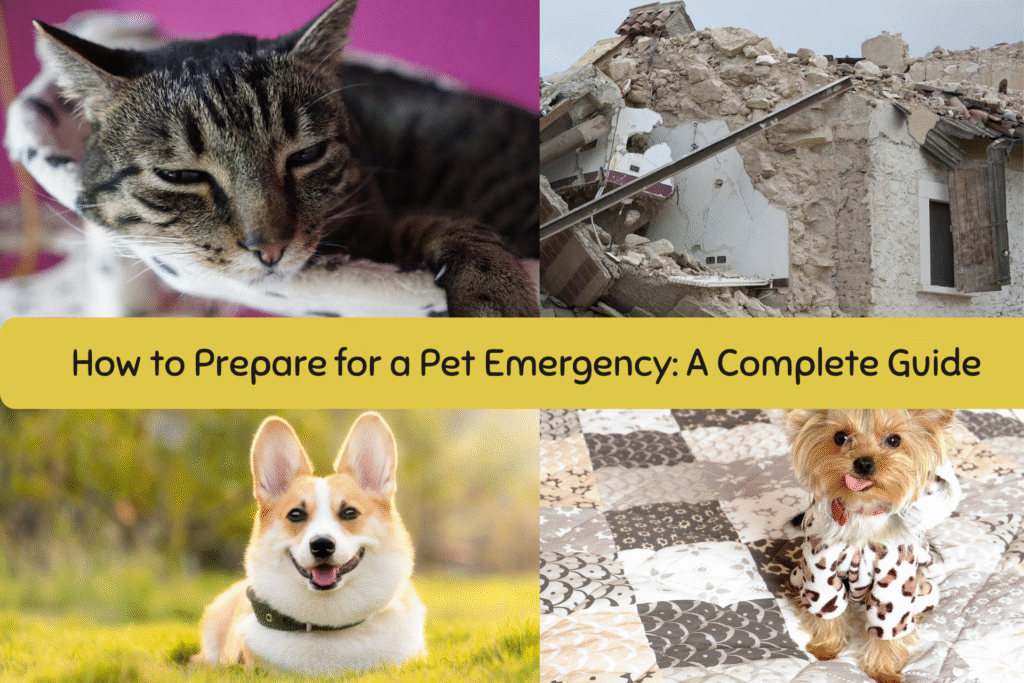Introduction
Every pet parent hopes they’ll never face a crisis with their beloved companion, but emergencies can strike when least expected. Whether it’s a sudden illness, injury, natural disaster, or household accident, being prepared can make all the difference. Pets depend on their humans to stay calm and act quickly when danger arises. Knowing what to do—and having the right supplies and information ready—can save precious time, reduce stress, and even save your pet’s life.
In this complete guide, you’ll learn how to prepare for any type of pet emergency, from creating a pet first aid kit to developing an evacuation plan. You’ll also discover how to recognize signs of distress, organize important medical records, and ensure your pet’s safety during unexpected events.

Understanding What a Pet Emergency Is
A pet emergency can happen anytime, anywhere. It includes any situation where your pet’s life, health, or comfort is in immediate danger. Some emergencies are obvious—like bleeding, choking, or broken bones—while others, such as poisoning or heatstroke, can be harder to spot until it’s almost too late.
Common pet emergencies include:
- Severe bleeding or trauma
- Breathing difficulties or choking
- Sudden collapse or loss of consciousness
- Seizures
- Heat exhaustion or hypothermia
- Suspected poisoning
- Unexplained pain or distress
- Natural disasters requiring evacuation
Recognizing the signs early allows you to act fast and contact your veterinarian or an emergency animal hospital before the situation escalates.

Why Pet Emergency Preparedness Matters
Being prepared doesn’t just mean having supplies on hand—it means knowing exactly what to do when seconds count. In an emergency, adrenaline takes over and clear thinking can be hard. Having a plan helps you respond calmly and efficiently.
Preparedness also ensures your pet’s safety during large-scale emergencies like hurricanes, wildfires, floods, or power outages. Many families overlook pets when planning for disasters, leading to tragic outcomes. With proper preparation, you can prevent unnecessary panic and protect every member of your household—furry, feathered, or scaly.
Another key reason for preparedness is that veterinary care isn’t always immediately available, especially during natural disasters or late-night emergencies. Knowing basic pet first aid can stabilize your animal until professional help is accessible.

Assembling a Pet Emergency Kit
One of the most important steps in emergency planning is creating a pet emergency kit. This kit should include everything your pet needs to survive and stay healthy for at least 72 hours. Store it in an easy-to-carry container, such as a backpack or plastic bin, and keep it near your own emergency supplies.
Your kit should include:
- Food and water: At least three days’ worth of your pet’s regular food, plus bottled water. Don’t forget a collapsible bowl or two.
- Medications: Include any prescription medications, along with dosage instructions and a copy of the prescription from your vet.
- First aid supplies: Bandages, antiseptic wipes, tweezers, scissors, gauze, adhesive tape, hydrogen peroxide (for wound cleaning, not ingestion), a digital thermometer, and disposable gloves.
- Medical records: Vaccination history, recent medical notes, and your veterinarian’s contact information.
- Comfort items: A blanket, small toy, or something that smells like home to reduce anxiety.
- Sanitation items: Waste bags, litter, and cleaning wipes to maintain hygiene in temporary shelter situations.
- Identification: A recent photo of your pet and a copy of their microchip number or tag ID.
Keep this kit updated—rotate food and water every few months and check expiration dates on medications and supplies.

Learning Pet First Aid
Pet first aid can bridge the gap between injury and professional care. Every pet owner should know the basics of how to handle common emergencies like choking, bleeding, or burns.
If your pet stops breathing, knowing how to perform CPR can be life-saving. CPR for pets involves checking for breathing and a heartbeat, clearing the airway if obstructed, and providing rescue breaths and chest compressions. You can find certified pet first aid courses through organizations like the American Red Cross, which offers both in-person and online training.
Other useful first aid knowledge includes how to stop bleeding by applying pressure with a clean cloth, flushing wounds with saline, and stabilizing fractures with makeshift splints. Always keep your vet’s emergency number readily available, and never give your pet human medications unless specifically directed by a veterinarian.

Organizing Important Information
During a crisis, you won’t have time to search for phone numbers or vaccination records. Keep a printed list of key contacts and medical information in a waterproof folder within your emergency kit.
This list should include:
- Your veterinarian’s name, address, and emergency phone number
- A 24-hour emergency animal hospital near you
- Poison control hotlines, such as the ASPCA Animal Poison Control Center (888-426-4435)
- Contact information for a trusted friend or family member who can care for your pet if you can’t
Having digital copies stored on your phone or cloud backup is also helpful in case paper records are lost.

Creating a Pet Emergency Plan
A strong pet emergency plan outlines what to do in different scenarios—medical emergencies, home accidents, and natural disasters. Start by mapping out your nearest emergency veterinary hospitals and identifying which ones operate 24/7. Keep their contact info posted on your fridge or saved in your phone.
If a disaster requires evacuation, plan in advance where your pet will go. Not all shelters or hotels accept animals, so research pet-friendly accommodations in your area. The Red Cross and FEMA websites often provide updated lists of shelters that allow pets during major emergencies.
In case you’re not home when disaster strikes, identify a neighbor or local friend who can access your house, collect your pet, and bring them to safety. Give this person a key, detailed care instructions, and your pet’s emergency kit.

Preparing for Natural Disasters
Natural disasters such as hurricanes, tornadoes, earthquakes, or wildfires can strike with little warning. Having a disaster-specific plan ensures that your pet remains safe and calm even in chaotic situations.
For hurricanes and floods, keep your pet’s carrier, leash, and ID tags accessible at all times. If you need to evacuate, bring your pets—never leave them behind, even for a short time. Floodwaters and debris can be extremely dangerous.
During wildfires, prepare to leave early. Smoke inhalation can harm pets just as it harms humans. Keep your vehicle fueled, and store your emergency kit in the car during fire season.
If you live in an earthquake-prone area, identify safe spaces in your home where your pet can take shelter. After a quake, pets may hide or become disoriented, so secure doors and fences to prevent them from running away.

Recognizing Early Signs of Distress
Sometimes, emergencies develop gradually. Learning to recognize the early signs of illness or distress can help you take action before things get worse.
Watch for changes in:
- Breathing (rapid, labored, or shallow)
- Behavior (sudden aggression, hiding, or restlessness)
- Eating and drinking habits
- Mobility or coordination
- Elimination patterns (vomiting, diarrhea, or straining)
- Gum color (pale or blue gums may indicate oxygen issues)
Trust your instincts—if your pet seems “off,” it’s always better to call your vet than wait and risk complications.
Pet Identification and Microchipping
Proper identification is vital during emergencies, especially if you’re forced to evacuate or your pet escapes. Make sure your pet wears a collar with a durable ID tag that includes your phone number and address. Microchipping adds an extra layer of protection.
A microchip is a tiny device inserted under your pet’s skin that stores a unique identification number. When scanned at a vet clinic or shelter, it links to your contact details. Always keep your microchip registration up to date so rescuers can reach you quickly if your pet is found.

Emergency Preparedness for Multi-Pet Homes
If you have multiple pets, your emergency plan should account for each animal’s needs. Cats may require separate carriers to prevent fighting, while dogs might need extra leashes or harnesses. Small pets like rabbits, hamsters, or reptiles need specialized carriers and temperature controls.
Label each pet’s carrier with their name, your contact information, and any medical or behavioral notes. This makes it easier for emergency responders or shelter staff to care for them if you’re separated.

Maintaining Your Emergency Readiness
Preparation isn’t a one-time task—it’s an ongoing process. Review your emergency kit and plan at least twice a year. Check expiration dates on food, water, and medications. Update contact information if you move or change vets.
You can also run practice drills with your family to make sure everyone knows what to do. Teach children how to safely secure pets, and practice loading carriers or leashing dogs quickly. The more familiar your pets are with their carriers and emergency routines, the calmer they’ll be if a real event occurs.
Emotional Preparedness: Staying Calm Under Pressure
Your pets take cues from your behavior. In an emergency, staying calm reassures them and prevents panic. Practice deep breathing and focus on one step at a time. Having a written checklist or laminated card outlining what to do can help you stay organized when emotions run high.
If your pet experiences trauma, they may behave differently afterward—hiding, refusing food, or acting fearful. Offer comfort, patience, and consistency while they recover, and consult your veterinarian if behavioral issues persist.
After the Emergency: Recovery and Care
Once the immediate danger has passed, your focus should shift to your pet’s recovery and emotional well-being. Schedule a veterinary checkup to ensure there are no hidden injuries or delayed reactions to stress.
If your home or routine has changed, reestablish familiar feeding times and environments as soon as possible. Consistency helps pets feel secure again. Monitor them for signs of anxiety, appetite loss, or unusual behavior, which could indicate lingering stress or injury.
Take time to rest and reassess your emergency plan based on what worked and what didn’t. This reflection helps you improve your readiness for future events.
Conclusion
Being prepared for a pet emergency is one of the most loving things you can do for your animal companion. Emergencies are unpredictable, but your response doesn’t have to be. By creating a detailed plan, assembling a complete pet emergency kit, and staying informed about first aid and local resources, you’ll be ready to protect your pet in any situation.
Preparation brings peace of mind—not just for you, but for your pet, who depends on your calm and capable care. With the right steps today, you can ensure that tomorrow, no matter what happens, your furry friend stays safe by your side.



